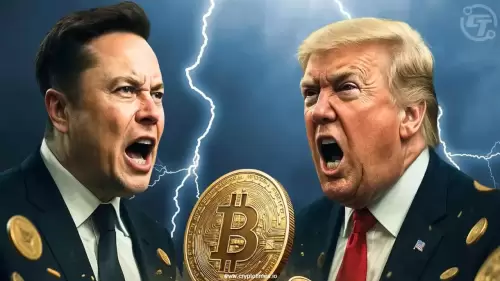 |
|
 |
|
 |
|
 |
|
 |
|
 |
|
 |
|
 |
|
 |
|
 |
|
 |
|
 |
|
 |
|
 |
|
 |
|
Cryptocurrency News Articles
MicroStrategy CEO Michael Saylor Unveils a Proposal to Help the US Dominate the Digital Asset Market
Dec 23, 2024 at 12:00 pm
Despite the prime cryptocurrency losing its foothold in the $100K zone, the company Michael Saylor helped build remained 58% up on its BTC portfolio.

MicroStrategy stock (NASDAQ:MSTR) is up 58% year-to-date thanks to the prime cryptocurrency. As of last weekend, the company had gained unrealized gains of $4.2 billion on its BTC portfolio.
Now, with all eyes on MicroStrategy and Saylor, the executive chairman has capitalized on the opportunity to promote the digital asset powering his business. On Saturday (at UTC standard), Saylor unveiled a proposal titled “Digital Assets Framework, Principles, and Opportunity for the United States.”
As the title implies, the paper outlines how the US could continue to position itself as a global economic powerhouse amid the rapid transition of the world of finance toward digital assets. It keeps policymakers up to date with the relevant topics in the industry, such as the different classes of these assets, the rights and roles of the stakeholders in the sector, and more.
Broadly, Saylor’s proposal covers four main areas of focus. These include defining digital asset classes, presenting a rights-based model for the digital asset economy, highlighting the importance of focusing on innovation, and discussing the role of digital assets in strengthening the US’ position globally.
Defining Digital Asset Classes
To begin with, Saylor argues that understanding the taxonomy of digital assets is an essential step in advancing policy and promoting innovation. He briefly tackles the differences of digital commodities like Bitcoin, digital securities such as tokenized equity or debt, digital currency based on fiat, digital token offering utility, digital non-fungible tokens (NFTs), and digital asset-backed tokens (ABTs) backed by digital assets like gold and oil.
Rights-Based Model
Next, the MicroStrategy executive chair emphasizes the necessity of creating a robust framework that establishes the rights and responsibilities of issuers, exchanges, and owners in the space. He believes it is key to allowing these players to confidently engage the market.
However, Saylor reminds that the blueprint should be reinforced with the foundational principles of transparency, accountability, and compliance.
Focus on Innovation
Moreover, Saylor urges the US government to mitigate friction and bureaucracy. Instead, it should prioritize efficiency and innovation within a free-market setting. With that, token issuances should be streamlined, and costs should be limited to no more than 1% of assets under management (AUM) to issue an asset.
Along the way, the Bitcoin advocate suggests fair public disclosures for exchanges to provide the industry and investors transparency, which could aid them in making more informed decisions. Nonetheless, he says anyone caught lying, cheating, and stealing should be punished accordingly with applicable civil or criminal laws.
Catalyst in 21st-Century Market Renaissance
Finally, the MicroStrategy official highlights that the US is in the best position to trigger a “21st-century capital market renaissance.” It could reward the nation with trillions of dollars in value creation.
To achieve such a feat, Saylor proposes lowering token issuance costs from $10–$100 million to $10–$100 thousand and reducing the creation and issuance of digital assets into hours or days instead of the usual months and years of processing time.
Similarly, he advises expanding access for open capital markets from the current 4,000 public companies to 40 million businesses.
Disclaimer:info@kdj.com
The information provided is not trading advice. kdj.com does not assume any responsibility for any investments made based on the information provided in this article. Cryptocurrencies are highly volatile and it is highly recommended that you invest with caution after thorough research!
If you believe that the content used on this website infringes your copyright, please contact us immediately (info@kdj.com) and we will delete it promptly.



























































